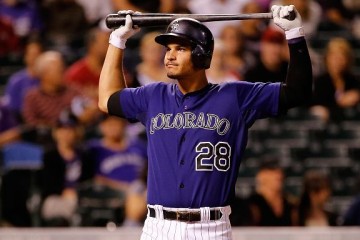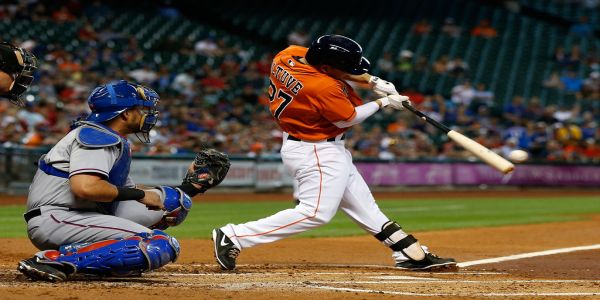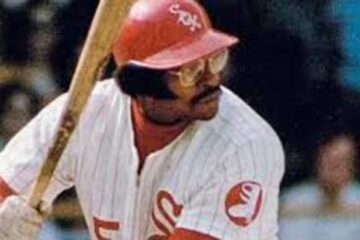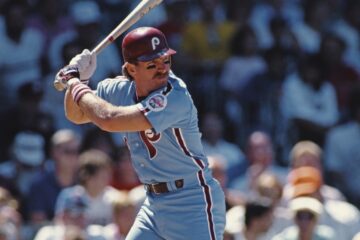2015 Fantasy Baseball: The Fielding Chronicles — Third Basemen
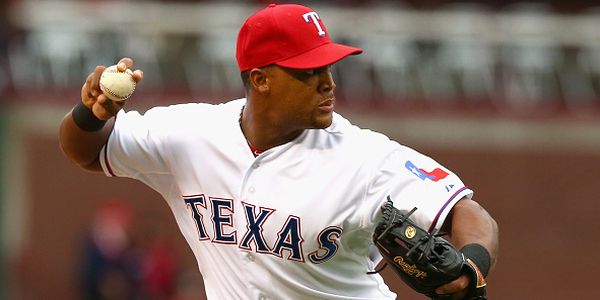
Why should I read this article?
With all of the great coverage on our site and throughout the internet, why should you bother yourself with this fielding mumbo-jumbo? I am not aware of any fantasy league that includes fielding numbers (although that would be interesting). However, fielding has a direct impact into who ends up being put on the lineup card in the first place. Third base in particular is prone to both extremes and those extremes help explain why some lackluster hitters always seem to find their way into the lineup.
It also explains why some fairly decent hitters never seem to play everyday. However, it should be pointed out that some of these guys have inflated reputations that see them get overdrafted every year. It’s one of the negatives of looking at numbers like WAR or WARP. Those metrics include everything a player contributes and that includes fielding. As you will see, some of our players are probably average offensively but look like superstars when you include their work with the glove.
How does this fielding thing work?
We will split the players into three different groups: the elite, the solid, and the trailers. The elite players will have per 1000 inning average of nearly ten runs or better. The elite players will all be over zero, but less than that level. The trailers will all have per 1000 inning totals of less than zero. Of course, that all makes perfect sense, but it says nothing about our source or how that source works.
Our source is “The Fielding Bible” data by John Dewan. Dewan has been using a version of this system for nearly a decade now. Billjamesonline updates the data on a daily basis. Essentially, Dewan (and his staff) use video evidence to split batted balls into zones on the field. Those zones tell us who should make the play and they pool all the balls hit into that zone (alone with their trajectory and velocity) to determine how difficult those plays are for the typical fielder at that position. From there, they simply compare the percentage of plays made for each fielder (third baseman in this case).
The raters use this information to determine whether a third baseman makes more plays than a third baseman typically would with his batted balls or fewer plays. They then convert that into either a positive or negative runs saved total. Billjamesonline even breaks the data down into their proficiency on different types of plays (plays to left, plays to right, pop ups) if one were so inclined to look. We will not break it down to that level.
The Elite
| Innings | DRS | DRS/1000 | 2014 | |
| Nolan Arenado | 2309 | +53 | +22.95 | +16 |
| Manny Machado | 2861 | +52 | +18.18 | +6 |
| Brett Lawrie | 3032 | +36 | +11.87 | 0 |
| Adrian Beltre | 15038 | +178 | +11.84 | +9 |
| Juan Uribe | 3915 | +41 | +10.47 | +17 |
| Evan Longoria | 8147 | +80 | +9.82 | -5 |
| Josh Donaldson | 3604 | +35 | +9.71 | +20 |
| Martin Prado | 3458 | +32 | +9.25 | +8 |
Believe it or not, Adrian Beltre ranks sixth all-time among third basemen in career WAR. When you see the fielding numbers you can believe it. He just hit his 400th career home run as well. Put together significant offensive numbers with the fielding numbers you see above and you have an all-time great player. If he continues to play as he has for the last several seasons, he will surpass Chipper Jones for fifth on the all-time list by the end of 2016. Everyone in the top ten is either in the Hall of Fame or not yet eligible for the Hall of Fame.
Nolan Arenado and Manny Machado are obviously less experienced than Beltre, but they are clearly on a level by themselves with the glove. This is where we must be careful. Those superlative fielding numbers are obviously a part of their reputation. Neither is anywhere near elite with the bat, but some fans have treated them that way because of all the buzz surrounding their overall game.
If you are going to benefit off anyone on this list it might be Juan Uribe. Considering his lack of offensive credentials he would have been out of the game years ago without that glove. He has put up some sneaky numbers lately, but he still doesn’t quite play everyday. Yet, if you are looking for bench help on the waiver wire, you can guarantee that his glove will get him into the lineup more often than not.
The Solid
| Innings | DRS | DRS/1000 | 2014 | |
| Todd Frazier | 3386 | +19 | +5.61 | +7 |
| Ryan Zimmerman | 9925 | +52 | +5.24 | -1 |
| Chase Headley | 6626 | +27 | +4.07 | +13 |
| Mike Moustakas | 4640 | +16 | +3.45 | -2 |
| Luis Valbuena | 2705 | +3 | +1.11 | -10 |
| David Wright | 13333 | +1 | +0.08 | +13 |
The most disappointing story here might be Ryan Zimmerman. He has been a solid third baseman for years now but was forced to move across the diamond because of degenerative shoulder condition. 10,000 innings tends to be the cut off for a full length career, but he might get there at first base if he can remain healthy. Anthony Rendon still has not played an inning this season, but he stands to man the position for years in Washington.
Similarly, David Wright has been plagued by injuries lately. 2014 saw him get himself back to mediocre as a fielder, but nagging injuries and lack of production has moved him to mediocre with the bat. The Mets have a ton of money sunk into him, so he will get every opportunity to return to being Captain America instead of Steve Austin.
Fantasy fans might keep an eye on Luis Valbuena. He just hit his tenth home run of the season on Sunday and his status as a solid fielder remains intact despite a shaky 2014 campaign with the glove. He’s still hitting near the Mendoza line on the season, but he can provide some punch from off the bench in certain situations. Valbuena and Headley are both likely waiver wire fodder now, but their glove will keep them in the lineup.
The Trailers
| Innings | DRS | DRS/1000 | 2014 | |
| Trevor Plouffe | 3206 | -1 | -0.31 | +6 |
| Pablo Sandoval | 6776 | -3 | -0.44 | +4 |
| Kyle Seager | 4652 | -3 | -0.64 | +10 |
| Matt Carpenter | 2133 | -2 | -0.94 | -2 |
| Lonnie Chisenhall | 2638 | -9 | -3.41 | -14 |
| Aramis Ramirez | 13496 | -63 | -4.67 | -5 |
| Casey McGehee | 4877 | -24 | -4.92 | -2 |
| Pedro Alvarez | 4788 | -28 | -5.85 | -5 |
| David Freese | 4700 | -33 | -7.02 | -9 |
| Will Middlebrooks | 2152 | -16 | -7.43 | -5 |
| Chris Johnson | 5158 | -64 | -12.41 | -13 |
Chris Johnson hits lines drives. He does it particularly well. When you take that away he’s got nothing. Literally. He doesn’t have a great deal of power or speed. He doesn’t draw walks. He doesn’t make contact consistently. As we see above, he is also a deplorable fielder. At least he’s deplorable when compared with everyone else that plays the position with any regularity. He’s hitting around .280, but can’t seem to get himself in the lineup. Gee, I wonder why.
It’s really unfair to call the guys on top of the table as trailers. After all, they all have averaged less than a run below average per 1000 innings. Plus, all of them except Carpenter turned in positive campaigns last season. Once you get to Chisenhall you get to players that aren’t playing everyday. Yes, offense has something to do with that, but mostly it is about the fact that if they aren’t hitting there is no reason to keep them in the game.


